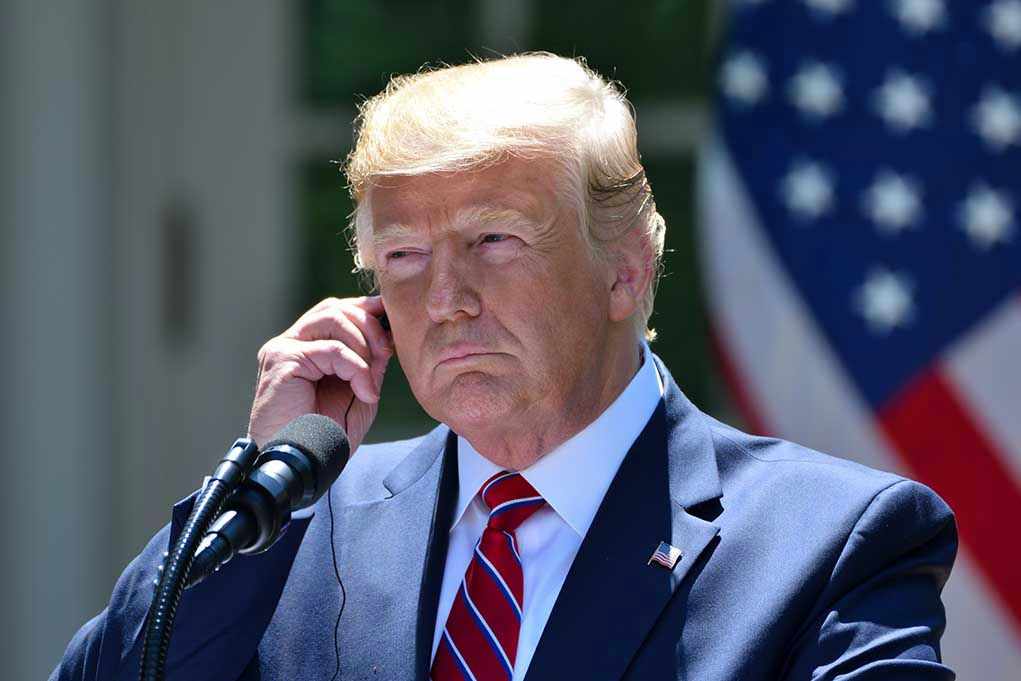
One controversial statue, one dawn raid, and a city’s most iconic lawn—when the Park Police yanked a Trump-Epstein artwork from the National Mall, the boundaries of protest, power, and public memory were thrown into sharp, uncomfortable focus.
Story Snapshot
- A provocative Trump-Epstein statue was installed with a legal permit but removed four days early by Park Police.
- The removal ignited debate over free speech, protest art, and political accountability in public spaces.
- Anonymous artists, permit authorities, and the White House each navigated complex motives and optics.
- The incident spotlights the fragile line between public order and provocative political expression on federal ground.
Park Police Seize the Spotlight, Not Just the Statue
Before sunrise National Park Service officers and Park Police converged on the National Mall, where an anonymous collective’s latest act of protest—a statue depicting Donald Trump and Jeffrey Epstein holding hands—had appeared just hours earlier. The statue, installed near the Capitol with a valid permit, was meant to stand until September 28. Instead, it was hoisted away after just one day, with authorities citing “non-compliance” with the display’s permit requirements. Officially, the removal stemmed from violations such as lacking 24-hour security or failing to maintain the required on-site presence. But unofficially, the incident stoked a firestorm over whether provocative protest art is truly safe—even when it follows the rules.
The Mall has hosted countless displays, but few have so directly confronted the uneasy intersection of powerful men, public accountability, and the wounds left by the Epstein affair. The abrupt removal triggered a new round of public arguments about whether government agencies act as neutral arbiters of public order, or if they’re quietly shaping the boundaries of dissent.
The Art, the Permit, and the Power Play
The Trump-Epstein statue was not the first time anonymous artists used the National Mall as their canvas for political critique, but its subject matter cut closer to the bone than most. Trump’s history with Epstein—once social acquaintances, later publicly severed—has long been fodder for political opponents and media scrutiny. The statue’s sudden removal, despite a legal permit, raises uncomfortable questions: Was it simply a procedural misstep, or does it reflect a more selective enforcement when protest art targets powerful figures? The Park Service and Park Police maintain they acted strictly on permit violations, but neither has released detailed explanations or documentation, leaving room for skepticism and speculation about what really motivated the crackdown.
The White House, for its part, dismissed the statue as a “waste of money,” denying any role in its removal. Yet the optics of a Trump-Epstein statue vanishing before it could spark a planned week of debate plays directly into the hands of those suspicious about governmental overreach. The anonymous artists, meanwhile, saw their work amplified rather than silenced, as news coverage and social media debate exploded in the aftermath of the statue’s eviction.
Political Theatre or Free-Speech Casualty?
Display permits on the National Mall are designed to balance free expression with public safety and order—an uneasy compromise, especially when art takes aim at political nerves. The Trump-Epstein statue’s ouster echoes past controversies: golden Trump statues, anti-war vigils, and other installations have all faced scrutiny, but few have been removed mid-permit. The pattern raises the specter of inconsistent enforcement, especially when protest art threatens reputations or agitates influential interests. Legal experts, artists, and political analysts see the case as a microcosm of larger questions: Who gets to decide what art is too provocative for public spaces? And when government agencies act, are they upholding neutral standards or bowing to political pressure?
For activists and creators, the message is chilling. Even with official paperwork in hand, the risk of abrupt removal looms large, especially for those whose art dares to confront the most powerful. For the public, the episode is an education in the invisible boundaries that shape which stories get told—and which get quietly erased from America’s front yard.
What Happens Next: Censorship, Protest, and the Memory Hole
The Trump-Epstein statue is gone, but the debate over its removal has only intensified. Short-term, the story has poured gasoline on the persistent conflagration of Trump-related controversies, Epstein’s toxic legacy, and the limits of public protest. In the long run, this could embolden the National Park Service to tighten permit enforcement, chilling future protest art on federal land. Yet paradoxically, the controversy has given the statue’s message a far larger platform than it might have achieved if left undisturbed. As artists, politicians, and citizens weigh the risks and rewards of public dissent, the National Mall stands as both a battleground and a barometer for American free speech—its green expanse a reminder that the fight over who controls the narrative is as fierce as ever.
Whether this incident proves to be a turning point in how protest art is tolerated—or suppressed—in the nation’s most visible public forum remains to be seen. What is certain is that the battle lines between protest and power, art and authority, are drawn in plain view, even when the art itself is hauled away before most of Washington finishes its morning coffee.

